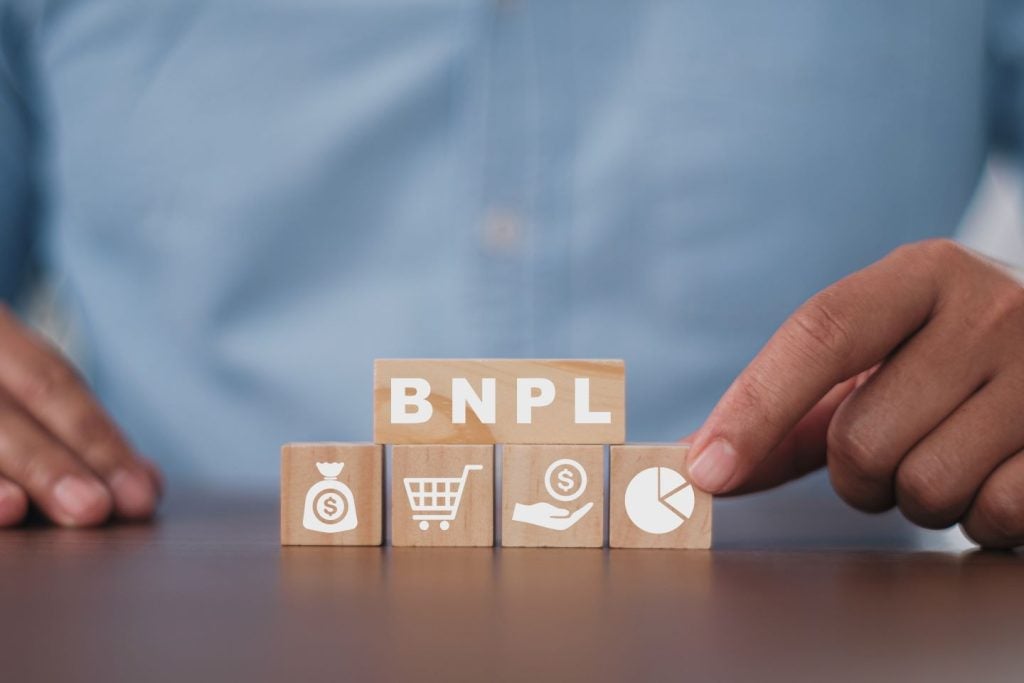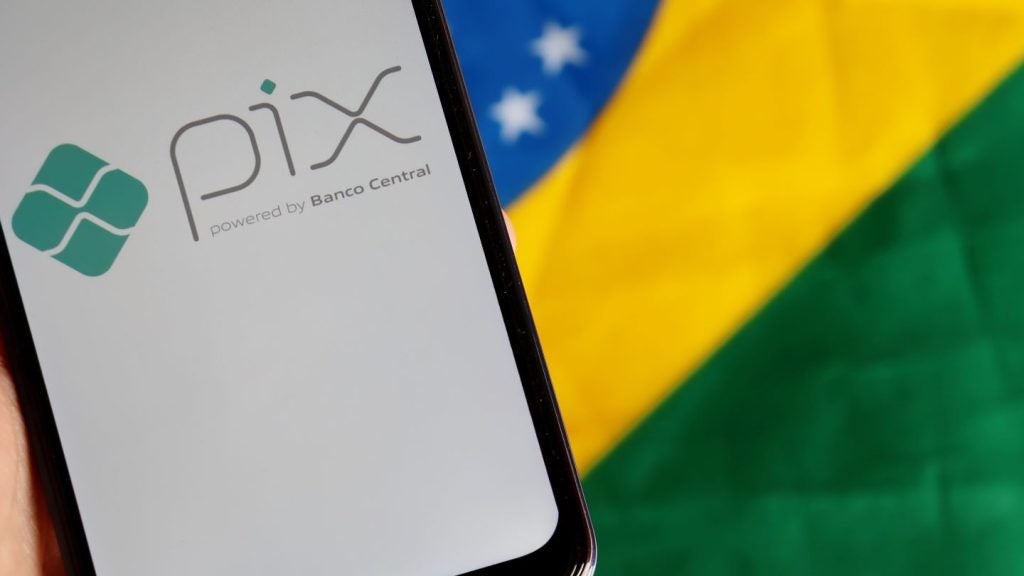
Leading experts in the cards industry take stock of the year just gone by and share with Mohamed Dabo their predictions of the major trends likely to shape the year ahead.
Mike Cowen, Head of Digital Payments, Mastercard UK, Ireland Nordics & Baltics

Here are the ten key trends that will have an impact on payments and ecommerce in 2020:
-
Making payments as easy as ABC
2019 has seen a massive shift to new interfaces enabling consumers to shop, live, and pay without the need to pick up a mobile phone or other device in order to do so.
With voice shopping set to hit $40 billion by 2022, the need to adapt payments for these channels has risen.
How well do you really know your competitors?
Access the most comprehensive Company Profiles on the market, powered by GlobalData. Save hours of research. Gain competitive edge.

Thank you!
Your download email will arrive shortly
Not ready to buy yet? Download a free sample
We are confident about the unique quality of our Company Profiles. However, we want you to make the most beneficial decision for your business, so we offer a free sample that you can download by submitting the below form
By GlobalDataOne example is the introduction of audio idents, in 2019 Mastercard launched its own sonic brand as way for customers to be reassured that their payment is secured by Mastercard even in a voice-only interaction.
-
Pay as you live
2020 will see the expansion of payments via the channels people already use every day. Increasingly the channels we use most will be used to make payments, for example sending money to social media and messaging contacts will become as easy as sending a photo or video clip is today.
-
Putting an end to password rage
Throughout 2020 we’ll see a steady improvement in the way that issuers authenticate cardholders for online payments with more and more offering authentication by fingerprint or facial recognition on your mobile phone.
This not only improves security but also removes friction, enhancing the overall customer experience.
-
Streamlining the online checkout
Historically the different elements of the online payment process such as card selection, confirmation and authentication have all been quite separate resulting sometimes in a fractured payment experience.
This started to change a few years ago through tokenised digital wallets such as Apple Pay, Google Pay and Samsung Pay. In 2020, we will see the next phase of this trend with many large merchants replacing all of their stored cards-on-file with secure tokens.
-
The online world gets its own ‘Chip & Pin”
We’ll also see the last piece of the ‘tokenisation puzzle’ start to fall into place with a programme for the UK industry rollout of the Secure Remote Commerce (SRC) standard.
SRC allows us to completely rethink the online checkout by removing the need to manually type card details and replacing the card number with a token.
Much as the UK rollout of Chip and PIN (2004-2006) slashed in-store fraud, SRC can do the same for e‑commerce while at the same time improving the online payment experience.
-
The end of manual card entry
Under SRC, rather than having to type a 16-digit card number, the cardholder simply selects the image of the card they want to use. Already live in the US, the UK will be one of the next markets to benefit from this wholesale upgrade of the online payment experience.
-
Knowing me, knowing you
Increasingly consumers want to feel valued and recognised as individuals. Advances in technology such as Artificial Intelligence (AI) will help us to do this by making personalisation much smarter and more accurate, allowing service providers to offer customers an individually relevant experience.
-
It pays to pay
The average UK consumer participates in 14 loyalty programmes but only presents a loyalty card for 20% of qualifying transactions. Often the limiting factor is simply the number of cards that a person would have to carry.
While it has been possible for several years for consumers to store their loyalty cards digitally in their mobile phones this has not significantly changed the situation – perhaps in part because many POS scanners are not able to read a barcode from the screen of a mobile phone.
In 2020 we will see the emergence of new loyalty propositions that release the consumer’s desire to participate from the ‘tyranny of the loyalty card’ helping consumers to maximise their recognition and retailers to improve their return on investment.
-
Delivering peace of mind
Consumers need peace of mind not only regarding their money but also – increasingly – as regards their data. This becomes even more relevant as the range of services that a consumer can access via their bank becomes much broader through initiatives such as PSD2 and Open Banking.
In 2020, in addition to permitting third party requests to access their data, we will see the emergence of digital identity services which allow a consumer to prove their identity electronically without the inconvenience to having to produce their passport or driving licence and utility bills.
-
The next frontier for the mobile banking app
The mobile banking app will play an increasingly important role not only in the authorisation of payments but also providing the means to control access to one’s personal and financial data.
This will contribute to a growth in the popularity of account-based payments with services such as Pay By Bank App appealing in particular to consumers who want the control of being able to manage every payment through their mobile banking app.
Pat Bermingham, CEO, Adflex

The payments industry has been moving away from static card numbers and towards digital wallets for several years, albeit with a few hiccups along the way, and this continued in 2019.
One of the biggest launches of the year encapsulated this trend: the Apple Card, which has no card number, signature or expiry date.
This is reflected in the B2B space too, where we have seen demand for virtual cards sharply rise due to the increased security and financial control they enable – particularly in industries with complex supply chains.
As such, I predict that payment card numbers will soon be out of the public domain altogether.
Digital banks like Monzo, which allows users to see exactly where they are spending and categorises payments for their reference, have continued to grow their user bases. The threads that link these shifts in consumer and business behaviour are data and transparency.
Secure remote commerce (SRC)
The more insight that companies and consumers can have on their spending, the better, as it enables a clear view of finances and the ability to make better decisions. This has even more tangible benefits for businesses than consumers, as increased automation and better data ‘close the loop’, simplifying payment reconciliation and tax compliance.
Something that will have a significant impact on the payments industry in 2020 and beyond is secure remote commerce (SRC), a card-based payments system that further builds on the concept of eliminating passwords and card numbers in ecommerce.
The effects will be long-term, but eventually, the hosted pay page will go the way of the fax as enterprise-scale buyers and merchants move to more flexible, self-service payment APIs.
The key trends here will be the move towards digital wallets and ubiquity, as the single ‘Pay’ button will reduce the amount of differently branded payment methods at checkout, such as MasterPass and Visa Checkout.
Leo Machado, Product Director, Trustonic
2019 in review
The evolution of mPOS has been one of the most exciting and disruptive payment trends in 2019. Using consumer off-the-shelf (COTS) smartphones for payment acceptance is delivering huge benefits to traders, small retailers and SMBs, as well as payment platforms and solution providers.
Adoption costs are plummeting, enabling a broader range of merchants to accept card and mobile payments. This is in turn is increasing customer satisfaction with reduced queuing time and enabling more personalized check out experiences.
It is no surprise then that the global mPOS market was valued at $26 billion in 2018 and continues to rise – reports predict the market will grow by 35% from 2018 to 2025.
Early adopters in the hospitality and retail sectors have been quick to adopt this trend and other verticals won’t be far behind.
Security threats remain a challenge
Threats to data and apps remained a challenge. Although legislative mandates like PSD2, Strong Customer Authentication and GDPR have been driving forces for the development and adoption of better security, many at C-level still don’t fully recognize the security risks that must be guarded against when taking new app-based banking, fintech and payment services to market.
Fraudulent transactions emanating from compromised devices, for example, is a real security threat that must be taken more seriously.
That said, there has been good progress in the app security space. Banks and financial service providers are realizing that there doesn’t have to be a trade-off between security and functionality.
Cybersecurity can be a tool to deliver richer and faster services that enhance the user experience, not limit it.
A look to 2020
The continued success of smartphone mPOS depends very much on consumers’ ability to safely and securely make high-value payments. This requires the whole payments chain to work together to deploy solutions that achieve secure PIN entry on all COTS devices.
While we might not reach ‘mPOS acceptance nirvana’ in 2020 – i.e, secure payment acceptance and PIN entry happening on the same device using the smartphone’s NFC technology – we’re not far off!
When investing in mobile point of sale solutions, merchants will need to focus on identifying solutions that are secure by design and protected by in-app protection solutions that have been evaluated by relevant industry bodies, like the Payment Card Industry Security Standards Council and EMVCo. We are starting to see more of these solutions available on standard smartphones and this will continue into 2020.
Away from the commercial world, government initiatives are working hard to drive greater financial inclusion. In Indonesia, for example, the provision of secure eKYC, with our partners like VIDA, is driving striking shifts in financial inclusion – from 20% in 2011 to 49% in 2017.
Stan Swearingen, CEO of IDEX Biometrics
Biometrics will be at forefront in 2020
At IDEX Biometrics, we are seeing the potential for a lot of growth in the biometric payment card and access control markets for 2020. We expect to see positive developments in manufacturing and certification of biometric payment cards, thanks to increasing consumer demands for secure payments.
It’s my strong belief that both the biometric payment card and access control markets will fully materialise in the coming year. Therefore, my predictions for the biometric industry in 2020 are:
-
APAC will lead the way in biometric adoption
Biometric payment technology will become increasingly necessary to combat payment fraud in 2020. It looks like Asia will be leading the way in this field, in terms of adoption, production and implementation. The coming year will be pivotal as we start to see certification for the biometric payment card take off across Asia.
IDEX is also excited to see growing interest from Australasia. We expect to be introducing biometric smart cards there in 2020 with Quest Payment Systems, Australia’s largest payment technology supplier.
-
European regulation will drive innovation
Delays to the Strong Customer Authentication (SCA) ruling will prove a key driver for biometric adoption in 2020. The use of biometric payment cards to authenticate online payments will offer an important way for retailers to balance security measures that comply with the SCA regulation whilst also delivering ease-of-use for the consumer.
-
Contactless payment limits will disappear
Thanks to advancements in biometric fingerprint authentication technology, payment security no longer comes at the cost of convenience. Next year, increased fingerprint biometric authorisation will secure payment cards, removing the need for PINS and reducing the need for the £30 payment limit, all while making the transaction process faster.
-
Young consumers will demand biometric adoption
Regulation aside, it will ultimately be people power that propels biometric payment technology to mass adoption. We already know that Generation Z will make up 40% of all consumers by 2020.
So it’s important to acknowledge that they expect to be using new, secure biometric technology for increased payment security and convenience.
Our latest research found 62% of Generation Z think all banks should offer biometric payment cards to help reduce fraud. In response to this demand, banks will have to introduce fingerprint biometric payment cards to keep young customers, protect users from fraud and build trust with the consumers of tomorrow.
-
Financial inclusion will come to the fore
1.7 billion adults remain unbanked today. 2020 is the year this will have to change. Payment methods must be accessible and come at an affordable cost for all consumers.
In the coming year, fingerprint authentication cards will eradicate a number of obstacles that stand in the way of financial inclusion.
Consumers can be linked directly to their card by their fingerprint alone, supporting those without official identification, while home enrolment devices also save individuals from having to leave the house to register. This will allow consumers to hold on to financial independence for longer, no matter their physical or financial restraints.
-
Card-not-present fraud will be tackled head-on
The next crucial step for IDEX Biometrics and the wider industry will be to tackle card-not-present (CNP) fraud effectively. Biometric payment cards have the potential to strengthen online payment security and SCA compliance for e-commerce retailers.
The addition of a digital dynamic Card Verification Value (CVV) number on the card, for example, will present a new one-time code whenever the card owner’s fingerprint is presented on the card – making online payment fraud a thing of the past.
Andy Roe, Head of Product Management, International Banking and Payments, FIS
Real-time payments see rapid increase
Real-time payments are spreading. This year’s Flavors of Fast report from FIS found 54 countries with active real-time payment programs. That’s an increase of 35 percent year-over-year and a fourfold gain since 2014.
What’s more growth in global card expenditure shows no sign of abating with double digit growth forecast to continue between now and 2023. (source RBR)
While the growth in global payments is impressive, the digital payment revolution is still only just beginning. Next year more solutions will break through and reach the masses as more investment pours into the industry.
250 million vehicles will include embedded connectivity by the end of 2020. Forty-seven percent of US commuters use in-car connectivity to find a petrol station and order coffee and they use it an average of 65 times a year.
While the smart car lags the smart home, the automobile industry and financial institutions continue to integrate automobiles into the Internet of Things. This will allow consumers to pay directly via their cars for road tolls, car parking, petrol bills and even the drive-through order.
Consumer behaviour drives faster payments
Changing consumer behaviour will drive demand for invisible payments. Increasingly customers will use a mobile, wearable or another connected device for purchases to save time.
The majority of merchants are inclined to offer a universal “buy” button, paving the way to universal acceptance of stored digital payments credentials to converge with invisible payments from an ‘intelligent’ switch.
Business too will start to derive real benefits from the globalisation of faster payments with real-time reconciliation of payments and more tight control of their money movement.
Machine learning
Payment Providers should also embrace “Fraud 2.0” where dynamic risk scoring models that self-learn from every transaction will predict new and previously unknown fraud.
New behavioural biometrics will recognise how a person usually swipes or holds a device. Sixty-five percent of banks say the use of machine learning is a top priority for preventing fraud. This is set to increase out of fear of losing customer trust.
Cloud computing is also taking off, as payment providers look to improve speed to market with the latest innovations as well as cut processing costs, and improve flexibility and reach.
Next year will likely see augmented reality bridge AI and machine learning to human understanding, bringing the high street to homes. Consumers can fully experience the goods and the brand without leaving their sofa – this is the new frontier. Investment in ‘Paymentech’ has never been higher with venture capitalists betting big on payment entrants in the $1.9 trillion industry.
The greater the industry consolidation and investment, the faster we will see new the technologies mentioned above accelerate in adoption, value and volume.










